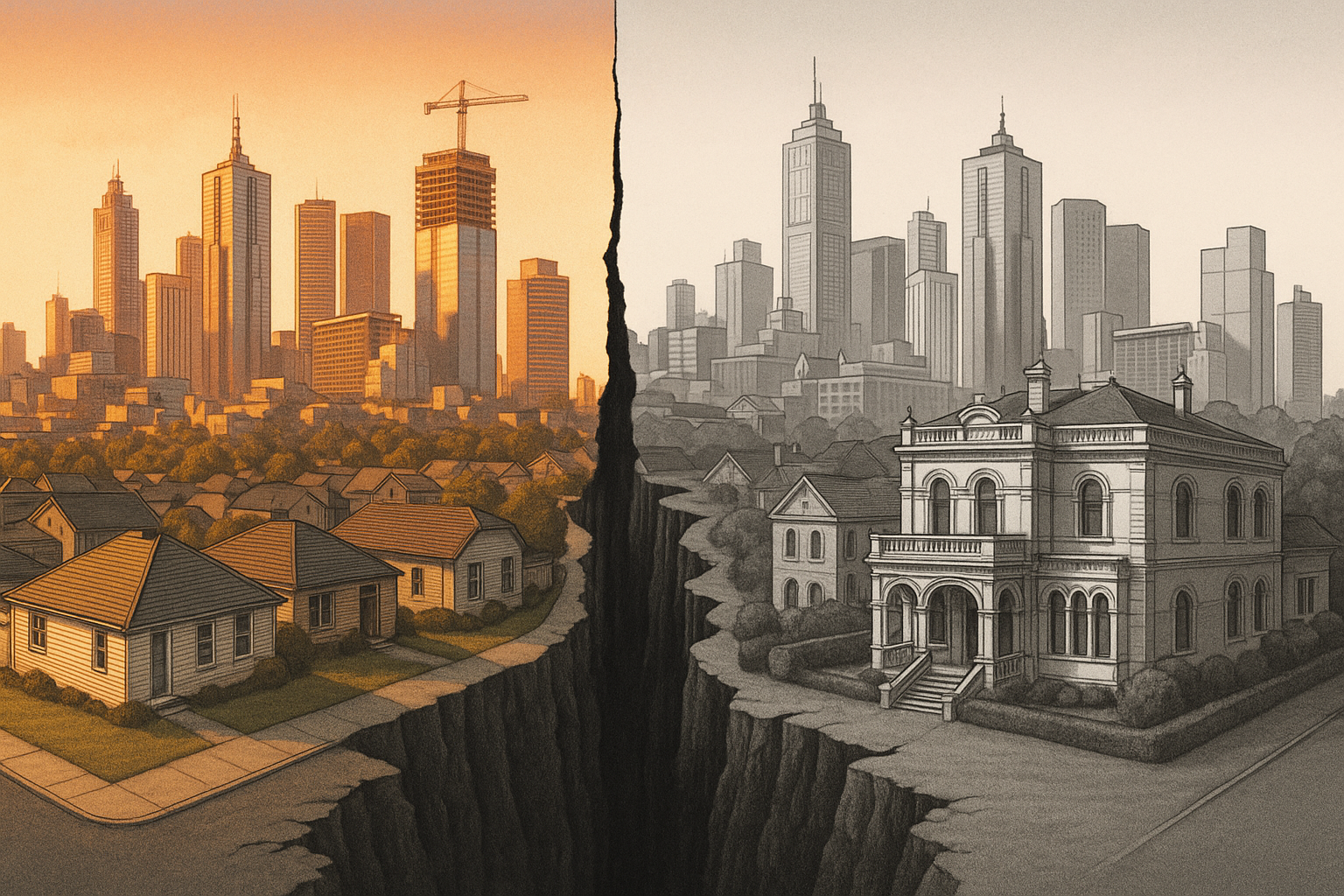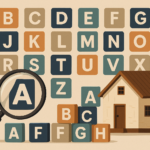
Key takeaways
Purchasing property in inner Melbourne suburbs like Fitzroy, Carlton or Northcote in the early 1980s turned out to be a gateway to multi-generational wealth.
These areas, once working-class, underwent gentrification and became some of the most valuable real estate in the country, with homes now worth over $1.5 million.
Property is no longer just about shelter, it’s about wealth and privilege.
Without serious reforms, in planning, zoning, and supply — the housing divide will continue to widen.
Investors and policymakers alike must reckon with how the past has shaped today’s market and what it means for Australia’s future.
If you bought a property in inner Melbourne in the early 1980s, you likely had no idea you were stepping onto a launching pad for multi-generational wealth.
Back then, homes in suburbs like Fitzroy, Carlton or Northcote were affordable, not cheap, but within reach of ordinary Australians.
Today?
Those same homes are worth well over $1.5 million.
And the consequences of that boom, which looked like good fortune at the time, are still reverberating through our property markets and our society.

A boom few understood and even fewer predicted
According to PropTrack’s Senior Economist Eleanor Creagh, what began as a slow shift in the '80s became a structural transformation.
As she put it:
“The gentrification of inner Melbourne delivered windfall wealth to those who bought early... but what it also did was lock out those who came later.”
She’s absolutely right.
We often talk about how compounding capital growth works over decades, but the real story here is about structural advantage.
Those who were able to buy into the market before the boom didn’t just win the property lottery. They won access to the best schools, the shortest commutes, the strongest communities, and, critically, the highest appreciating assets.
In the 1970s and early '80s, Melbourne’s inner suburbs weren’t the million-dollar enclaves they are today.
Back then, many of them were working-class neighbourhoods.
Blue-collar families lived in modest weatherboard homes that are now architectural trophies.
But by the mid-1980s, a combination of factors — economic liberalisation, changing demographics, urban renewal, and falling interest rates — started pushing prices upward.
What followed was a re-rating of inner-city land, and with it, a rapid rise in household wealth for existing owners as these locations gentrified.
As Creagh explains:
“You had a cohort that got in before the boom, saw prices multiply many times over, and now hold significant equity... while younger Australians are forced to look to the fringes.”
The wealth divide: a tale of two markets
This is where the story becomes uncomfortable, but necessary.
Because this isn’t just a tale of rising prices.
It’s the origin story of Australia’s housing wealth divide.
Those who bought in the '80s and early '90s, often with single incomes and modest deposits, now own properties in areas that have seen 10x price growth.
They’ve tapped that equity to fund renovations, investment properties, or help their kids into the market.
Many are now debt-free and asset-rich.
Meanwhile, today’s first homebuyers are facing median house prices 8–10 times the average income, tougher lending restrictions, and the need for six-figure deposits, often without family support, especially if their parents weren’t homeowners.
In Creagh’s words:
“Home ownership is increasingly a marker of intergenerational advantage. If your parents own property, you’re more likely to own property. And if they don’t, your pathway is far more difficult.”
This is a dangerous dynamic.
Housing was once the great Australian equaliser, a way for anyone with hard work and discipline to build wealth.
But over time, it’s become a gatekeeper, and that gate is increasingly locked.
Planning, policy and a shortage of political courage
One of the great failures in all of this has been our planning system.
Rather than increasing density in the very suburbs where people most want to live — close to transport, jobs, and lifestyle — we’ve kept inner- and middle-ring areas locked up under heritage overlays and NIMBY-friendly zoning.
The result?
-
A growing city pushed outward, not upward.
-
Infrastructure lagging behind population growth.
-
And inner-city land becoming even more scarce, further entrenching its value.
As a result, new supply has largely been dumped on the urban fringe, where land is cheaper but opportunity is scarcer.
Creagh puts it bluntly:
“The housing market has become increasingly segmented — with opportunity and affordability drifting further apart.”
What this means for investors today
As I often say, we can’t change the past, but we can learn from it.
And right now, smart property investors are recognising several key takeaways:
-
Long-term compounding matters more than short-term timing. The people who benefited from the 1980s boom didn’t try to flip properties. They held quality assets through cycles.
- Location is still everything. The fundamentals that drove growth in the '80s — proximity, lifestyle, jobs — are even more powerful today in our knowledge economy.
- Scarcity creates value. Those inner-ring properties are still in high demand and limited supply. That imbalance is not going away. But now the next round of gentrification will occur in the middle ring suburbs of our capital cities.
- Demographics drive demand. We’re seeing a generation of aspirational buyers and renters still wanting to live near the city. If they can’t buy there, they’ll rent, pushing rents and yields up for investors who own the right properties.
The boom that built modern Melbourne
The property boom of the 1980s wasn’t just about price growth; it was a social reshuffling.
It created a class of accidental millionaires and locked out a generation that came after.
And while we can debate solutions — zoning reform, shared equity schemes, or even tax policy changes — one truth remains:
Note: Property is no longer just a roof over your head. It’s a foundation of wealth, and increasingly, of privilege.
So, whether you're a homeowner, an investor, or an aspiring buyer, understanding how we got here is key to knowing what’s coming next.
As Eleanor Creagh aptly notes:
“Without significant changes to how and where we build, this divide will only get worse.”
Let’s hope we start building not just more homes, but better pathways to ownership, too.
Why Now Is a Window of Opportunity for Strategic Property Investors
Just like in the 1980's, I believe we’re in a window of opportunity for property investors who take a long-term view today .
Right now, we’re seeing what some would call a “perfect storm” of fundamentals that are aligning to support strong property markets in the years ahead:
- Continued rapid population growth is putting pressure on housing.
- An acute undersupply of dwellings,
- A chronic shortage of skilled labour, making new development slower and more expensive.
- Inflation has moderated, now sitting within the RBA’s target range.
- Interest rates will keep falling – bringing more buyers into the market
- Government first homebuyer incentives will pour fuel on the flames of our undersupplied housing market.
As interest rates keep falling and confidence returns among both buyers and sellers, we’ll enter the next phase of the property cycle.
And historically, this stage has delivered some of the best capital growth for those who act early.
Fact is, the smart money is already on the move. But what about you?
That’s where our Complimentary Wealth Discovery Session comes in. We’re offering you a 1-on-1 chat with a Metropole Wealth Strategist to help you:
- Clarify your financial goals
- Understand how macro trends affect your position
- Build a personalised, data-driven property strategy
- Get ahead of the curve — before everyone else piles in
There’s no cost, no obligation — just practical, tailored guidance based on decades of experience.
Click here now to book your free Wealth Discovery Session















